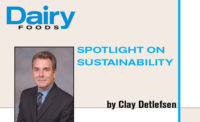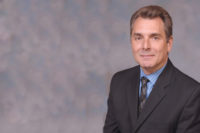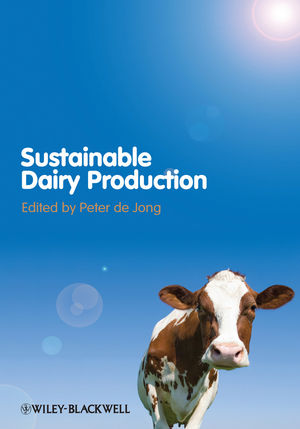Tap water in Singapore is treated sewage that is safe to drink

The headline of the article on CNN.com says “Futuristic Water-recycling Shower Cuts Water Bills by Over $1,000.”
I like to save money and be green, so I read the article and admit I am impressed. The shower is a closed-loop system. Hot water flows out of the showerhead, falls to the drain where it is purified to the drinking water standard with a nano-ceramic filter and heads right back to the showerhead again. It all happens very quickly and the water for the most part retains its heat. The inventor claims it saves 80% in energy costs and 90% in water usage. In fact water usage for a 10-minute shower is about 5 liters where a regular shower would consume about 150 liters.
This intrigues me, but the thought of showering in the same water as everyone else, no matter how clean, bothers me. So I did a little more research and found out it doesn’t bother me at all. At the end of each person’s shower, the water is jettisoned down the drain. The inventor got it right in that there is no “yuck factor” with this technology and I would consider it if and when I remodel my bathroom.
Lots of ‘yuck’
Over the years I have read a lot about water recycling and reuse. Years ago at an environmental conference in California I learned the San Diego water authority had developed its water reclamation skills to the point where it could take sewer water and clean it up to drinking water standards. The authority could have, but didn’t, return it to the potable water system, in part because of the yuck factor. Instead the reclaimed water is used for irrigation, manufacturing and other non-consumable uses.
Singapore, on the other hand, does return reclaimed water to the potable water system. Historically Singapore severely lacked fresh water sources and brought much of its water from Malaysia. To gain water independence, Singapore first created an urban storm water retrieval program, which captured rainwater via a 4,340-mile pipeline network, then cleaned it up and stored it in 17 reservoirs.
That’s not the end of it. In 2000, using membrane technology, engineers began to treat sewage water on a massive scale. The resulting product is clean enough to drink and clean enough to use in the manufacture of semi-conductors, which apparently needs cleaner-than-potable water. The sewage-to-drinkable-water project is known as NEWater and is one of the four taps Singapore relies on for its water supply with the three others being the aforementioned rainwater, desalinated water and imported water.
Right now Singapore’s 4 NEWater plants account for about 30% of its needs, but by 2060 it will satisfy 55% of the city-state’s water demands. What engineers there have and will accomplish is truly remarkable and amazingly they have been able to do it despite the yuck factor.
As educated and scientifically oriented as I am, I still think I would have a hard time drinking a bottle of the ultraclean NEWater. I realize that probably every molecule or drop of water I consume has probably been consumed and excreted by other humans or animals, and probably many times for that matter. I also realize that the water I used to drink from creeks in upstate New York when I was a boy was probably not so pristine as we all thought it was, but I would probably drink that today over a bottle of NEWater. I’m sorry to say that is just wrong thinking. I guess I need to grow.
Singapore got it right and, thankfully, as a result of its openness with the world in showing people and governments that it can be done, this concept is spreading. This is a harbinger and a call for change. If it can be done there, we can definitely make some changes here.
So what is going on in dairy plants with water reuse anyway? Unfortunately, there does not appear to be a great deal going on right now, but there is promise. One hindrance is the Pasteurized Milk Ordinance. The PMO-regulated facilities are fairly limited in the use of reclaimed water. It can be used as cleaning solution make-up water, for the production of culinary steam and a few other places.
But don’t get me wrong, I am a huge fan of the PMO as many of you know from the comments I recently filed with FDA. As I wrote last year, High Desert Milk in Idaho is reusing cow water, which now constitutes 80% of the 2 million pounds of daily process water it consumes. High Desert also avoided the high costs and tedious turnover associated with pasteurization by utilizing Atlantium’s ultraviolet technology to make the pasteurization-equivalent of polished water. UV disinfection of water is expressly authorized by the PMO. This technology is also used in Singapore, so if it can sanitize NEWater, it’s a safe bet that it works well in a dairy plant.
As technology gets better and better and experience is gained, hopefully we will see less wastewater and more reuse in the heavily water-dependent dairy industry.
Looking for a reprint of this article?
From high-res PDFs to custom plaques, order your copy today!








